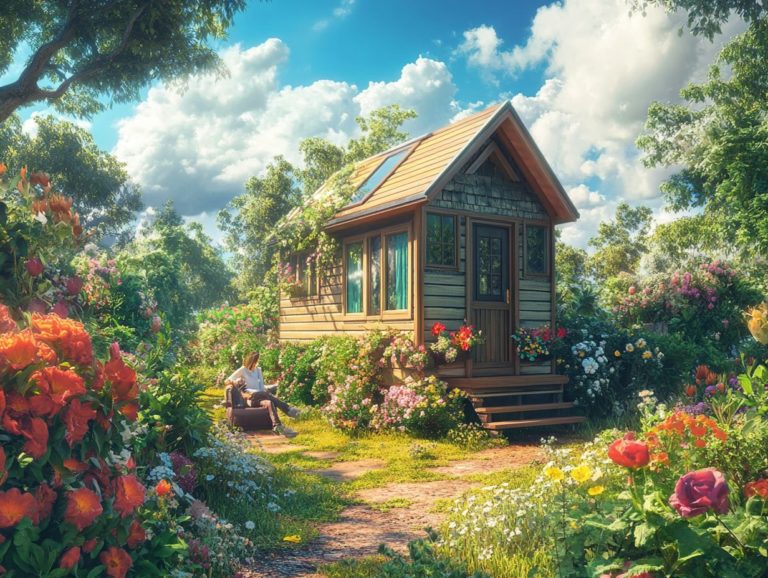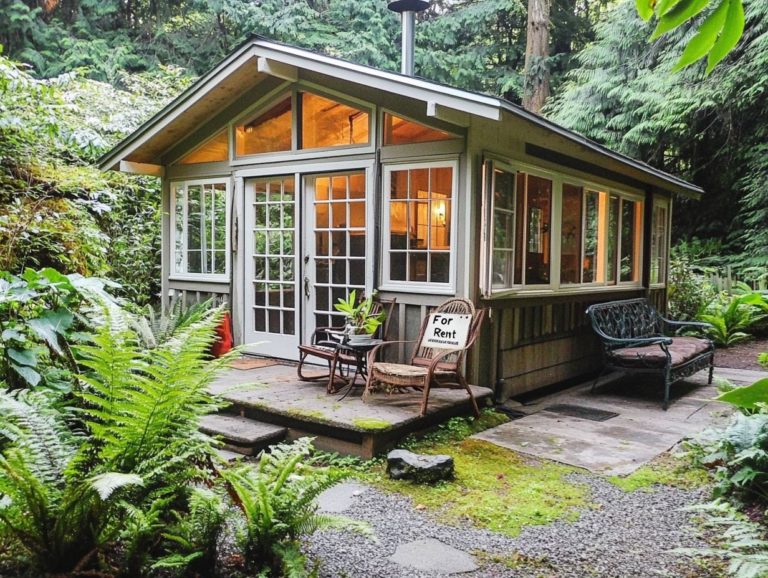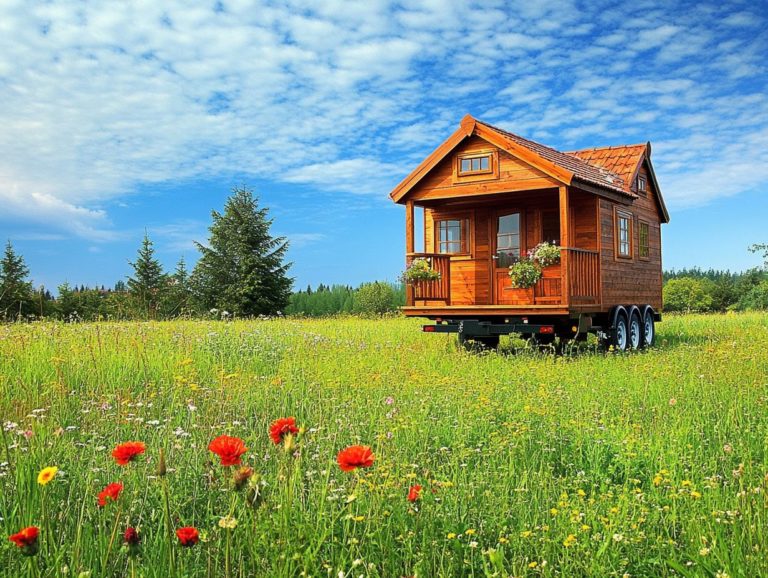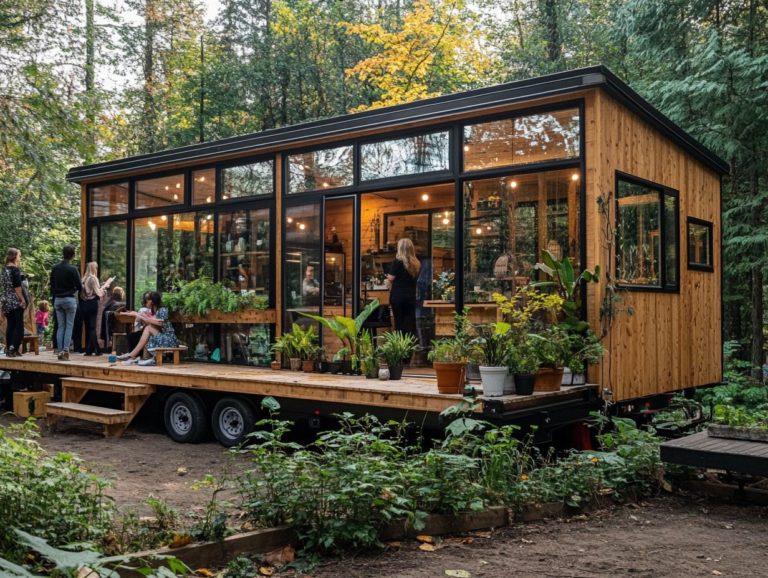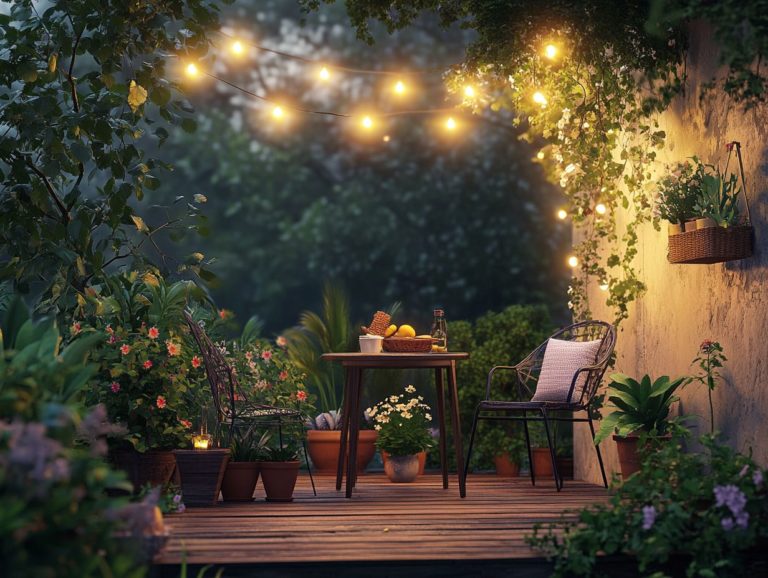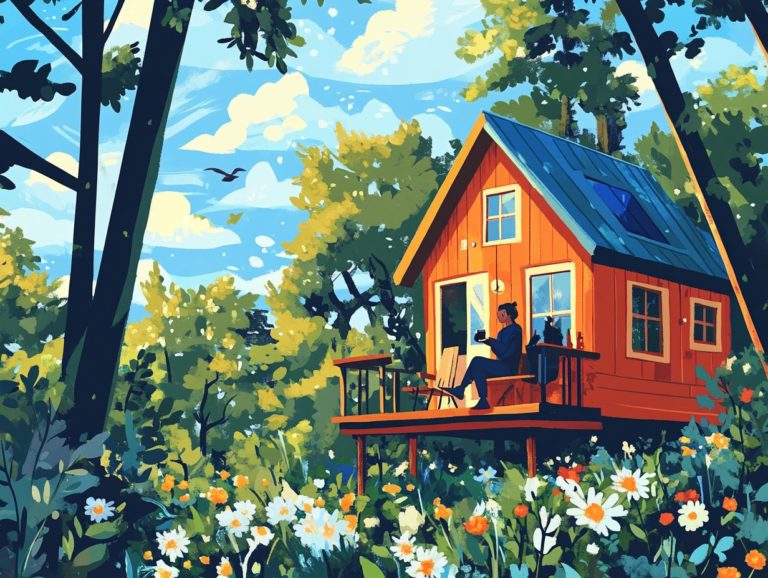What Are the Most Common Tiny House Mistakes?
Tiny houses have truly captured the imagination of many, presenting a simpler, more sustainable lifestyle that you might find appealing.
However, embarking on the tiny house journey isn’t without its challenges. From design miscalculations to construction mishaps and daily living hurdles, there are many mistakes that could transform your dream home into a source of frustration.
This article explores the common errors in tiny house design, construction, and everyday living. It provides you with the insights needed to sidestep these pitfalls and cultivate a rewarding tiny home experience.
Contents [hide]
- Key Takeaways:
- What is a Tiny House?
- Common Mistakes Made in Tiny House Design
- Common Mistakes in Tiny House Construction
- Common Mistakes in Tiny House Living
- Frequently Asked Questions
- What Are the Most Common Tiny House Mistakes?
- What are some tips for planning the layout of a tiny house?
- How can I estimate the cost of building a tiny house?
- Why is it important to follow building codes when constructing a tiny house?
- How can I choose the right trailer for my tiny house?
- What should I think about when considering my long-term needs in a tiny house?
Key Takeaways:
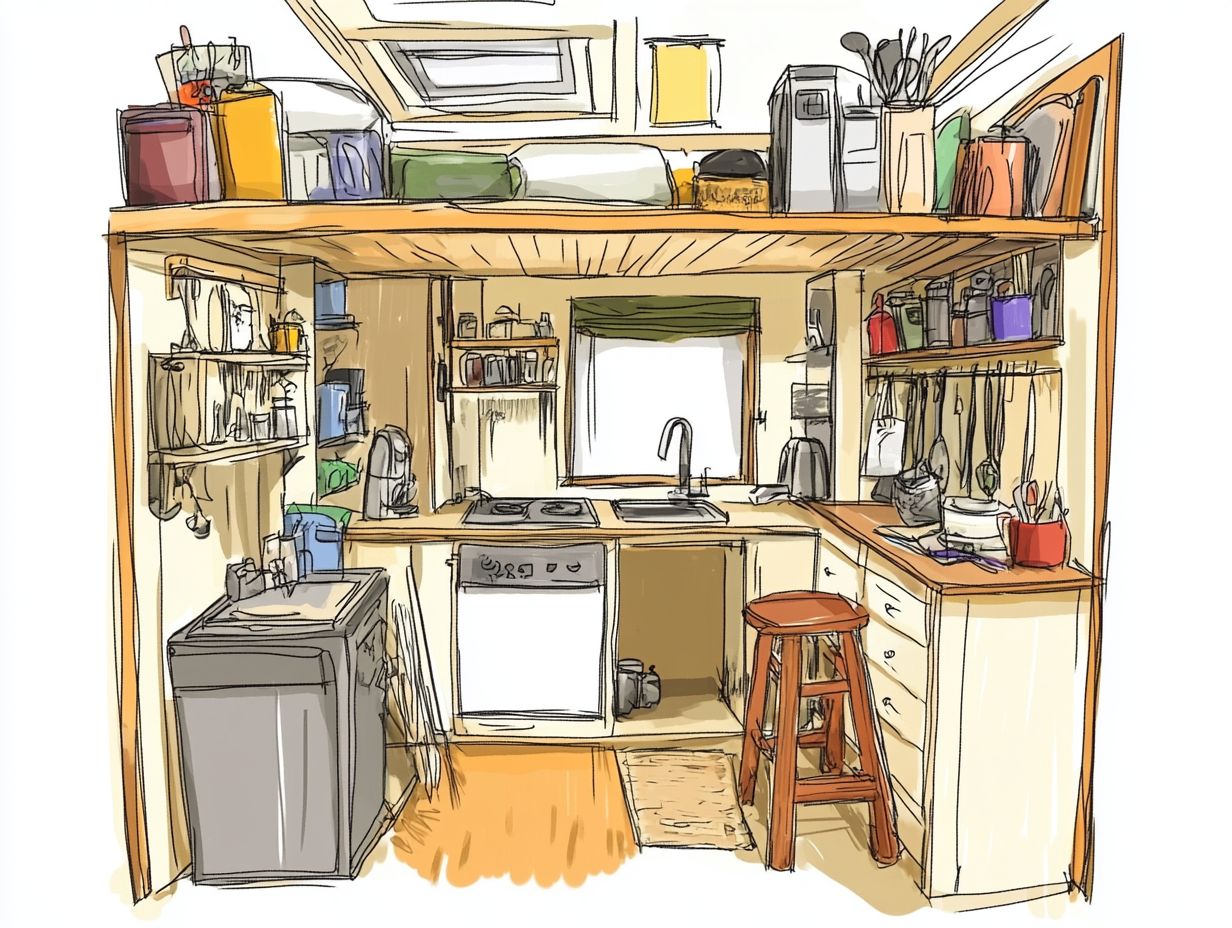
- Ignoring local building codes can lead to serious problems later. Research these codes before you start building a tiny house.
- Proper insulation is essential in tiny house construction to keep your home comfortable and prevent potential damage.
- Planning for storage and considering plumbing and waste management are important aspects of tiny house living. Don’t overlook these for a functional and comfortable space.
What is a Tiny House?
A tiny house, often called a tiny home, is a compact dwelling built on tiny homes on wheels. It maximizes space efficiency while offering all the comforts you need, making it an attractive option for anyone looking for affordable housing solutions.
Originating from the tiny house movement, these homes are typically under 400 square feet. They emphasize sustainability and minimalism. Places like the WeeCasa Tiny House Resort in Lions, Colorado and the Tiny House Design and Construction Guide showcase the versatility and charm of this lifestyle.
Unique tiny homes are popping up everywhere, and it’s thrilling to see! They’re capturing the imagination of those looking for a simpler and more intentional way of living.
Common Mistakes Made in Tiny House Design
Designing a tiny house is exciting. However, it comes with its own set of challenges. Many aspiring tiny homeowners often stumble into common pitfalls that lead to less-than-ideal living spaces and discomfort.
Overlooking essential space planning elements and underestimating the importance of making sure your home uses energy wisely and natural light can hinder your tiny home journey. Recognizing these missteps is crucial for crafting an optimal tiny home environment. Embrace creative room designs and multi-functional furniture to maximize every inch of that precious square footage.
Overlooking Functional Space
One of the most critical missteps in tiny house design is overlooking functional space. This can lead to cluttered and inefficient living environments, ultimately diminishing the joys of tiny home living.
When you prioritize functionality, incorporating innovative space planning techniques becomes essential. The strategic use of storage solutions, like built-in shelves or under-bed compartments, allows you to maintain an organized and serene atmosphere.
Choosing multi-functional furniture, such as sofa beds or foldable tables, saves space and enhances usability. It enables smoother transitions between various activities throughout your day.
By thoughtfully considering these elements, including headers and support, you can create a comfortable and inviting sanctuary that truly caters to your lifestyle. Even the smallest areas can flourish with the right design approach.
Understanding Seasonal Changes
Not thinking about seasonal changes in your tiny house design can lead to discomfort. It can also inflate energy costs, so it’s vital to consider insulation needs like cement siding and energy efficiency from the start.
Recognizing that temperature fluctuations can greatly impact your living environment is essential for anyone in a tiny house. By effectively insulating walls, roofs, and floors, you can counteract extreme heat or cold and ensure your comfort year-round.
Choosing energy-efficient windows and doors helps maintain indoor temperatures. This approach reduces your heating and cooling expenses. If you’re in a colder climate, consider incorporating a heat recovery ventilator. It provides fresh air while keeping warmth in. Conversely, if you’re in a warmer region, reflective roofing materials can be invaluable for keeping your interior cool.
Preparing for seasonal changes boosts your comfort and supports sustainable living.
Familiarizing with Local Building Codes
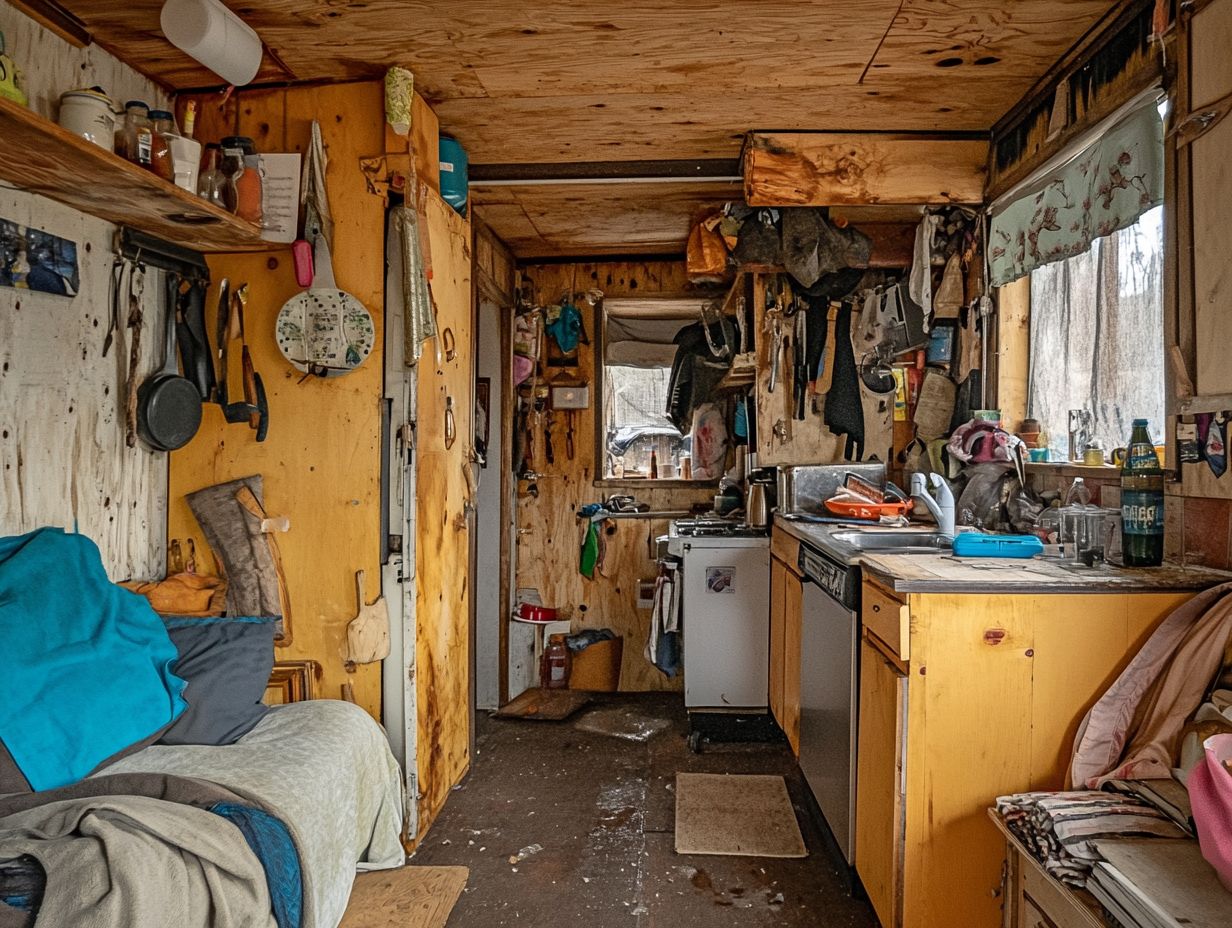
Ignoring local building codes can lead to significant setbacks as a tiny house builder. It can expose you to legal challenges or prevent legal parking for your tiny home.
As you dive into the tiny home movement, you must know about the specific regulations governing your area. Understanding these local building codes makes a significant difference. They often dictate the types of materials you can use, ensure structural integrity, and even determine the positioning of your home on the plot.
Navigating the complexities of legal parking options is equally important. This might include designated tiny home communities or zoning permits for temporary or permanent onsite living. By approaching these regulations diligently, you can ensure compliance and sidestep complications that might derail your dream of minimalist living.
Common Mistakes in Tiny House Construction
Building a tiny house comes with unique challenges, and it s easy to stumble into common construction pitfalls. These can impact both the durability and livability of your space.
From choosing inadequate building materials to overlooking essential insulation needs, these missteps can jeopardize the overall quality and safety of your tiny home. Failing to properly account for weight and stability adds to the risk.
Understanding these potential issues empowers you to create a sturdy and enduring tiny house that truly meets your needs.
Choosing Quality Materials
One of the most significant missteps in tiny house construction is opting for subpar materials, which can compromise energy efficiency and overall durability.
Choosing high-quality building materials is essential. This choice directly affects your tiny house’s thermal performance, or how well your home keeps heat in or out. Incorporating well-insulated walls and energy-efficient windows drastically reduces energy consumption. This ensures your space remains cozy without excessive heating or cooling.
Common materials like reclaimed wood, steel framing, and high-performance insulation boost sustainability and enhance your home’s longevity. By prioritizing quality over cost, you can craft a resilient living space that withstands the test of time, while embracing an environmentally friendly lifestyle.
Start researching local codes today to ensure your tiny home dream becomes a reality!
Not Properly Insulating
Neglecting proper insulation in your tiny house can lead to serious energy inefficiencies, driving up your heating and cooling costs while diminishing your comfort.
Insulation is essential for maintaining a stable indoor climate. It allows you to fully enjoy your compact living space throughout the year without the struggle of extreme temperatures.
There are various insulation options available, each offering unique properties from spray foam to cellulose and rigid foam boards. Understanding which materials best suit your needs boosts energy efficiency and enhances your overall comfort.
Common pitfalls, such as failing to seal areas properly or selecting the wrong type of insulation for your climate, can derail your best intentions. To avoid these mistakes, evaluate your local climate and building codes to ensure your insulation aligns with energy-saving guidelines and your comfort requirements.
Connecting with professionals who specialize in tiny house construction can provide invaluable insights into best practices.
It’s also important to think about ventilation along with insulation, as this is crucial for preventing moisture buildup that can lead to mold and structural damage.
By educating yourself on the various types of insulation and their applications, you can create a cozy, efficient, and sustainable tiny home that remains comfortable in every season.
Underestimating Weight and Stability
Underestimating the weight and stability of a tiny house can lead to structural troubles and legal headaches, especially regarding parking and mobility.
Consider the factors at play: the materials you choose, the design features, and whether you’re incorporating appliances they all significantly impact the overall weight of your little sanctuary.
To stay in line with legal parking regulations, you must meticulously calculate the house’s weight, paying attention to how it fluctuates with added furnishings and water tanks.
With proper planning, you can ensure ease of mobility and enhanced stability for your tiny home, helping to prevent any unfortunate mishaps on the road.
By prioritizing these calculations, you can navigate the challenges of compact living without compromising safety.
Common Mistakes in Tiny House Living
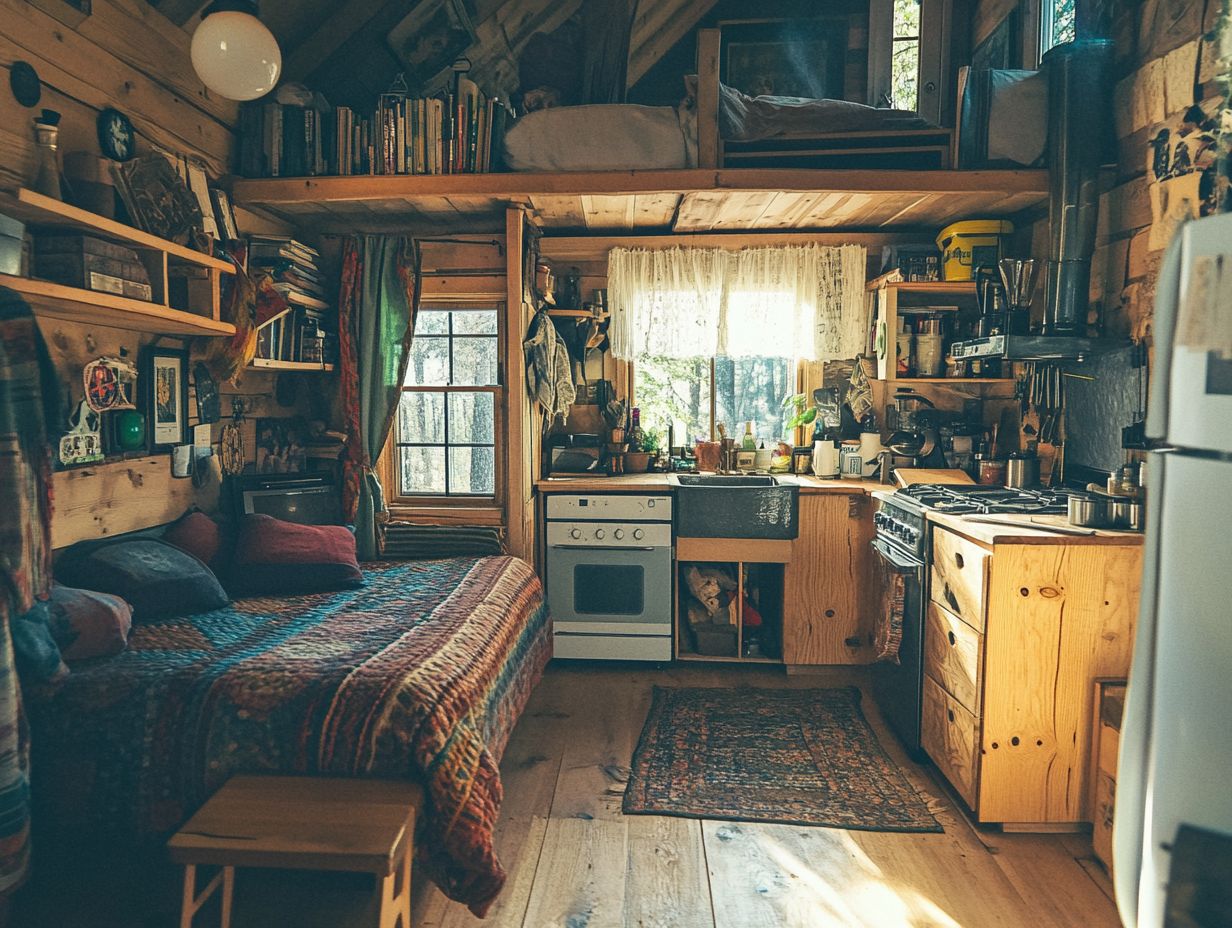
Living in a tiny house can be a deeply rewarding experience, yet many individuals stumble upon common pitfalls that can detract from that fulfillment.
From inadequate storage solutions to overlooking plumbing and waste management, these mistakes can hinder your enjoyment.
The trend of tiny house living is growing, making it important to recognize these challenges to enhance your living experience.
Additionally, staying informed about zoning regulations is crucial; it helps you avoid legal complications regarding where and how to park your tiny home.
Not Planning for Storage
One of the most critical oversights in tiny house living is failing to plan for adequate storage, which can lead to clutter and frustration.
To truly savor the minimalist lifestyle, you must prioritize smart storage solutions that fit seamlessly into your limited square footage while enhancing everyday functionality.
Embracing multi-functional furniture, like ottomans that double as storage bins or beds with drawers underneath, can dramatically optimize your space.
Consider innovative storage designs, such as wall-mounted shelves and hidden compartments, which are vital for keeping your essentials organized and easily accessible.
These smart choices cut down on mess and create a cozy, welcoming space, allowing you to fully embrace the unique lifestyle of tiny house living.
Not Considering Plumbing and Waste Management
Neglecting proper plumbing and waste management in a tiny house can lead to significant inconveniences and potential legal issues surrounding waste disposal.
This oversight can disrupt your daily life, resulting in dirty conditions and unexpected repairs that no one wants to deal with. In the realm of tiny house living, smart systems such as composting toilets, reusing water from sinks and showers, and portable waste tanks become invaluable allies.
These solutions not only maximize your limited space but also champion sustainability. It s crucial to understand and adhere to local building codes and waste disposal regulations to avoid fines and ensure safety; different areas may have unique requirements for plumbing and waste management.
By thoughtfully planning these essential aspects, you can create a harmonious living environment that offers comfort while respecting the surrounding ecosystem!
Ignoring Zoning and Parking Regulations
Ignoring zoning and parking regulations can present significant challenges for tiny house residents, potentially leading to legal penalties and even loss of housing.
When you fail to adhere to these guidelines, you might find yourself facing fines, having to move, or, in the worst-case scenario, eviction. Such issues can tarnish your reputation within the community, making future housing endeavors even more complex.
Tiny house dwellers need to research local laws regarding zoning and parking! This can be achieved by visiting government websites, attending community meetings, or consulting with local housing advocates.
Understanding these regulations not only ensures compliance but also helps in fostering a more harmonious relationship with your neighbors and local authorities.
Frequently Asked Questions
What Are the Most Common Tiny House Mistakes?
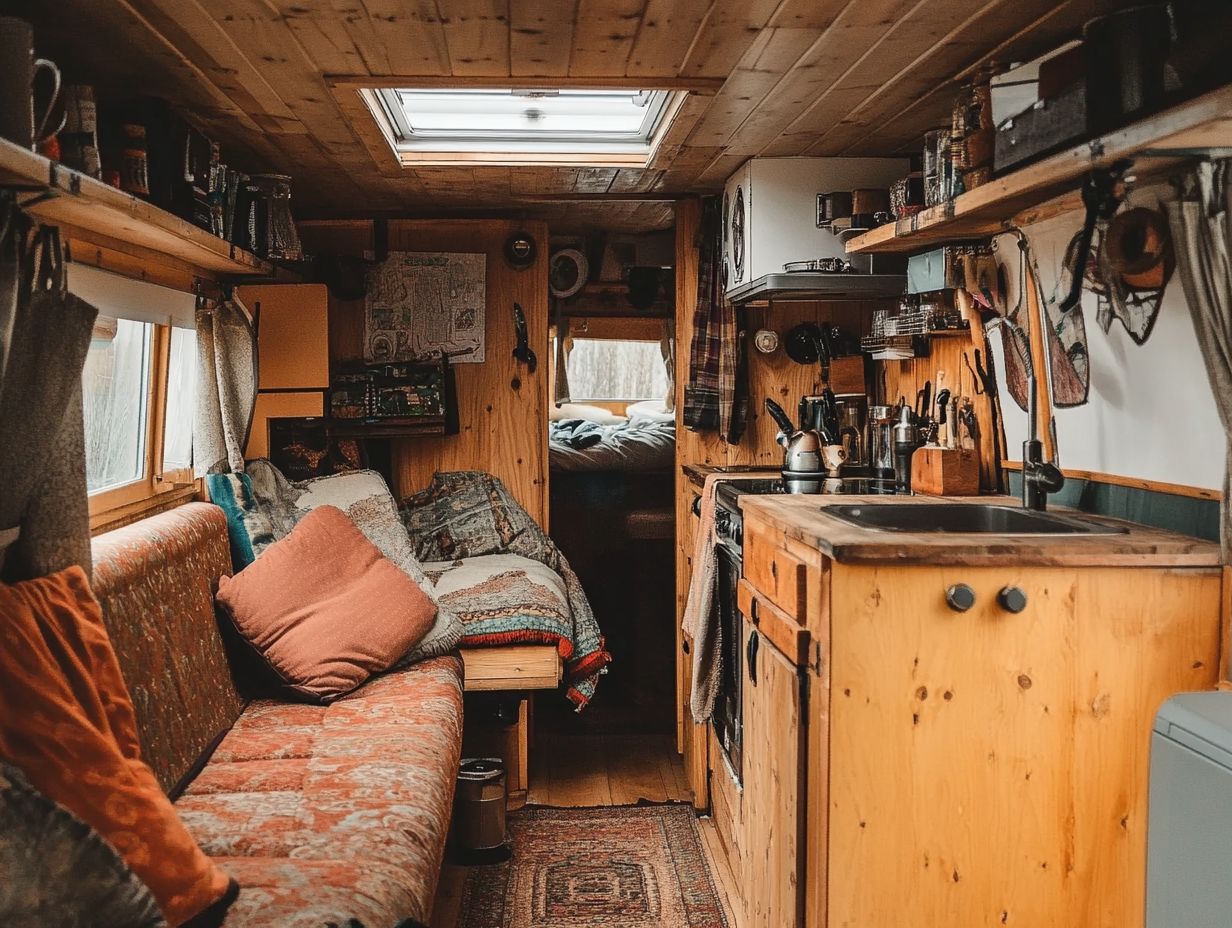
The most common tiny house mistakes include not properly planning the layout, underestimating the cost, not following building codes, not considering the climate, choosing the wrong trailer, and not thinking about long-term needs.
What are some tips for planning the layout of a tiny house?
When planning the layout of a tiny house, it is important to prioritize your needs, consider multi-functional spaces, and make use of vertical space. It is also helpful to consult with a professional or research other successful tiny house layouts for inspiration!
How can I estimate the cost of building a tiny house?
To estimate the cost of building a tiny house, you should research the average cost of materials and labor in your area, create a detailed budget, and add a contingency fund for unexpected expenses. It is also beneficial to consult with experienced tiny house builders for their insights!
Why is it important to follow building codes when constructing a tiny house?
Following building codes ensures the safety and legality of your tiny house. Not following codes can lead to fines and even having to tear down your tiny house. It is crucial to research and understand the codes in your area before beginning construction!
How can I choose the right trailer for my tiny house?
When choosing a trailer for your tiny house, consider the weight capacity, size, and any additional features or modifications you may need. It is also important to make sure the trailer is legally approved for use as a dwelling in your area!
What should I think about when considering my long-term needs in a tiny house?
When planning a tiny house, it is important to think about your long-term needs, such as storage space, potential future family growth, and the ability to age in place. It may also be beneficial to plan for potential changes in your lifestyle or needs in the future!
Start planning your tiny house today to enjoy the freedom and creativity it offers!

